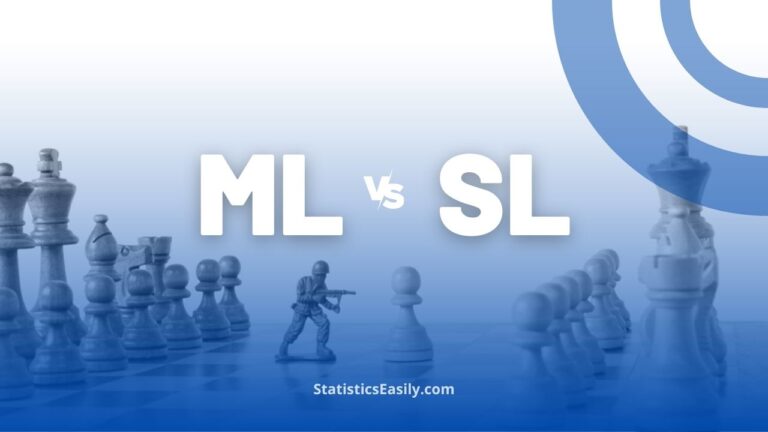Cramer’s V and Its Application for Data Analysis
You will learn the pivotal role of Cramer’s V in unveiling the secrets of categorical data analysis.
Introduction
In statistics and data analysis, Cramer’s V is a vital measure for assessing the strength of association between two categorical variables. Originating from the chi-square statistic, this coefficient provides a normalized value between 0 and 1, where 0 indicates no association and 1 signifies a perfect relationship. Its significance extends beyond theoretical interest, offering practical applications in various research and data-driven decision-making contexts.
This article aims to delve into the intricacies of Cramer’s V, shedding light on its mathematical underpinnings and comparative edge over similar statistical measures. We will explore its application through practical examples, emphasizing its implementation in R and Python. This approach not only aids in comprehending complex statistical concepts but also equips practitioners with the tools necessary for real-world data analysis tasks. Readers will understand Cramers V comprehensively through this exploration, enhancing their analytical toolkit for more informed and effective data interpretation.
Highlights
- Cramer’s V – A Key to Categorical Data Analysis: Unlocks the strength and direction of associations between categorical variables.
- Versatile Applications: Cramers V reveals deep insights across various fields, from market research to healthcare.
- Accessible Calculation: Python and R offer user-friendly pathways for computing Cramer’s V, broadening its accessibility.
- Interpretation Clarity: Understanding Cramers V values facilitates informed decision-making and enhances data analysis strategies.
- Navigating Challenges: Best practices and awareness of pitfalls ensure accurate and ethical utilization of Cramer’s V.
Ad Title
Ad description. Lorem ipsum dolor sit amet, consectetur adipiscing elit.
Understanding Cramer’s V
Cramer’s V is a robust statistical measure derived from the chi-square test, specifically designed to quantify the strength and significance of the association between two categorical variables. Unlike measures such as Pearson’s correlation coefficient, which is suited for continuous data, Cramers V adapts the chi-square statistic to a 0-1 scale, offering a clear, interpretable measure of association for categorical data.
The mathematical foundation of Cramer’s V involves the calculation of a chi-square statistic from a contingency table representing the frequencies of variable categories. The value of Cramers V is then obtained by normalizing the chi-square value, considering the sample size and the dimensions of the contingency table. This normalization is crucial as it allows for comparing associations across tables of different sizes and structures, providing a versatile tool for data analysts.
In statistical notation, Cramer’s V symbol is V. The symbol V represents the measure’s namesake, Harald Cramer, who introduced it, offering a way to encapsulate the strength of association within a single, concise metric.
Compared to other statistical measures for categorical data, such as the Phi coefficient, Cramer’s V stands out for its applicability to tables larger than 2×2, making it a more generalizable and flexible measure. Its value ranges from 0, indicating no association, to 1, denoting perfect association, with interpretations similar to correlation coefficients.
The theoretical aspects of Cramer’s V are rooted in probability theory and the principles of statistical independence. By assessing the extent to which the observed frequencies in a contingency table deviate from expected frequencies under the assumption of independence, Cramers V provides a nuanced understanding of the interplay between categorical variables.
Significance of Cramer’s V in Data Analysis
The significance of Cramer’s V in data analysis cannot be overstated. It provides invaluable insights beyond mere data description as a measure of association between two categorical variables. It enables data scientists to unearth patterns and relationships that might not be immediately apparent. This section will illustrate the practical utility of Cramers V through examples, showcasing its ability to reveal nuanced insights within datasets.
Practical Application in Market Research
Consider a market research scenario where a company wishes to understand the relationship between customer satisfaction (high, medium, low) and loyalty (yes, no). By applying Cramer’s V to survey data, analysts can quantify the strength of the association between these variables, guiding strategic decisions in customer relationship management.
Usage in Healthcare Studies
In healthcare studies, Cramers V can be applied to analyze the association between treatment outcomes (effective, ineffective) and patient demographics (age groups, gender). This can reveal critical insights into which demographic groups respond best to specific treatments, informing personalized medicine approaches.
Insight into Education Trends
Educational researchers might use Cramer’s V to investigate the relationship between teaching methods (traditional, interactive) and student performance (grades A, B, C, D, F). This analysis can highlight the effectiveness of different teaching strategies, contributing to curriculum development and pedagogical techniques.
Environmental Studies Application
Environmental scientists could employ Cramers V to explore the association between areas of high pollution (categorized by regions) and the incidence of respiratory diseases (yes, no). Such analysis is crucial for public health policies and environmental protection measures.
Understanding Consumer Preferences
Business analysts might use Cramer’s V to understand the relationship between product features (color, size, type) and consumer preferences (satisfied, neutral, dissatisfied). This can inform product development and marketing strategies to meet consumer needs better.
Calculating Cramer’s V: The Formula
Cramer’s V is calculated from the chi-square statistic obtained from a contingency table, measuring the strength of association between two categorical variables. The formula for Cramers V is as follows:
V = sqrt(χ² / (n * min(k – 1, r – 1)))
Where:
- V represents Cramer’s V, indicating the strength of association.
- χ2 is the chi-square statistic calculated from the contingency table.
- n denotes the total number of observations or the sum of frequencies in the contingency table.
- k and r are the number of columns and rows in the contingency table, respectively.
- min(k−1,r−1) is the minimum of either k−1 or r−1, ensuring the formula accounts for the smallest dimension of the table minus one, which acts as the effective degrees of freedom in the context of Cramer’s V.
This formula normalizes the chi-square value, adjusting for the size of the contingency table and the total number of observations, which allows Cramers V to provide a relative measure of association that is not influenced by the size of the table or the dataset. The result, V, ranges from 0 to 1, where 0 indicates no association and 1 indicates a perfect association between the variables.
Calculating Cramer’s V
Calculating Cramer’s V involves steps that begin with creating a contingency table from your categorical data. This table displays the frequency of each variable combination, laying the groundwork for the subsequent chi-square test. The following guide, supplemented with Python and R code snippets, will walk you through the process, elucidating the interpretation of Cramers V values.
Step-by-Step Calculation:
1. Construct a Contingency Table: Tabulate your data, categorizing it according to the variables of interest. Each cell in the table should represent the count of occurrences for the variable combinations.
2. Perform the Chi-Square Test: Use the contingency table to calculate the chi-square statistic. This test assesses whether a significant association exists between the variables.
In Python, you can use ‘scipy.stats.chi2_contingency’:
from scipy.stats import chi2_contingency chi2, p, dof, expected = chi2_contingency(contingency_table)
In R, apply the ‘chisq.test’ function:
chi2 <- chisq.test(contingency_table)$statistic
Calculate Cramer’s V: Normalize the chi-square value using the sample size and the minimum dimension of the contingency table (minus one).
Python code snippet:
import numpy as np n = np.sum(contingency_table) # Total sample size min_dim = min(contingency_table.shape) - 1 cramers_v = np.sqrt(chi2 / (n * min_dim))
R code snippet:
n <- sum(contingency_table) # Total sample size min_dim <- min(dim(contingency_table)) - 1 cramers_v <- sqrt(chi2 / (n * min_dim))
Interpreting Cramer’s V Values:
- 0: Indicates no association between the variables, suggesting their independence.
- Close to 1: Implies a strong association, with higher values denoting stronger relationships.
- Values in between: Offer a gradation of association strength, with the exact interpretation depending on your data and analysis context.
| Cramer’s V Value | Effect Size |
|---|---|
| 0.01 – 0.09 | Very Small |
| 0.10 – 0.29 | Small |
| 0.30 – 0.49 | Medium |
| 0.50 – 0.69 | Large |
| 0.70 and above | Very Large |
Best Practices and Common Pitfalls
When leveraging Cramer’s V for data analysis, adherence to best practices ensures this statistical tool’s ethical and effective use. Equally important is the awareness of common pitfalls that might lead to misinterpretation of results. This section aims to guide readers through the conscientious application of Cramers V, fostering accurate and insightful analyses.
Best Practices:
1. Data Preparation: Ensure your data is formatted and cleaned before analysis. Cramer’s V requires a contingency table, so your data must be categorical and organized accordingly.
2. Sample Size Consideration: Be mindful of your sample size. While Cramers V is normalized and less sensitive to sample size than the chi-square statistic, extremely small or large samples can still influence the strength of association.
3. Appropriate Use: Apply Cramer’s V only when suitable — specifically, for measuring the association between two nominal (categorical) variables. Using it outside this context can lead to invalid conclusions.
4. Reporting Results: When reporting your findings, include not only the value of Cramers V but also the chi-square statistic, degrees of freedom, and the p-value to provide a comprehensive view of your analysis.
5. Ethical Consideration: Always use statistical tools, including Cramer’s V, with integrity. Do not manipulate data or results to fit preconceived narratives or biases.
Common Pitfalls:
1. Overinterpretation: A common mistake is overinterpreting the magnitude of Cramer’s V. While it provides a measure of association strength, it does not imply causation between variables.
2. Ignoring Assumptions: The chi-square test, the foundation of Cramers V, assumes that the expected frequency in each cell of the contingency table is at least 5. Ignoring this assumption can lead to inaccurate Cramer’s V values.
3. Misunderstanding of Values: Cramers V ranges from 0 to 1, with values closer to 1 indicating a stronger association. However, there’s no absolute threshold for a “strong” association, as context matters. Interpret values within the specific context of your study.
4. Overreliance on Statistical Significance: While statistical significance (p-value) is important, it should not be the sole determinant of the practical significance of your findings. Consider the effect size and real-world implications.
5. Neglect of Cross-Validation: Especially in complex analyses, validate your findings with additional data or methods. Relying solely on one statistical measure, such as Cramer’s V, without cross-validation can lead to less robust conclusions.
Ad Title
Ad description. Lorem ipsum dolor sit amet, consectetur adipiscing elit.
Conclusion
Cramer’s V is a crucial statistical measure for assessing associations between categorical variables. It offers a clear and normalized perspective on their relationship with values ranging from 0 (no association) to 1 (perfect association). This guide has explored its theoretical foundations, practical applications across various domains, and calculation methods in tools like Excel, R, and Python, making it accessible to a broad audience. Emphasizing best practices and awareness of common pitfalls ensures the ethical and practical use of Cramers V, enhancing data analysis projects with deep, meaningful insights. Integrating Cramer’s V into data analysis elevates the quality of research. It aligns with the broader objectives of truth in pursuing knowledge.
Recommended Articles
Discover more transformative insights in data analysis by exploring our collection of in-depth articles on related topics here on our blog. Dive deeper into the world of data science with us!
- How to Report Chi-Square Test Results in APA Style: A Step-By-Step Guide
- Understanding the Assumptions for Chi-Square Test of Independence
- What is the Difference Between the T-Test vs. Chi-Square Test?
- Effect Size for Chi-Square Tests: Unveiling its Significance
- Mastering the Chi-Square Test: A Comprehensive Guide
- Understanding the Null Hypothesis in Chi-Square
Frequently Asked Questions (FAQs)
Q1: What defines Cramer’s V? It’s a normalized statistic derived from the chi-square test, measuring the association strength between two nominal variables.
Q2: How do you calculate Cramer’s V? Use the chi-square statistic from a contingency table and normalize it considering its dimensions and sample size.
Q3: Why is Cramer’s V important in data analysis? It quantifies the relationship between categorical variables, providing clarity and insight into data patterns.
Q4: Can I calculate Cramer’s V in Excel? Excel supports Cramers V calculation through formulae and functions, making it accessible without programming skills.
Q5: How do Python and R aid in calculating Cramer’s V? Both offer libraries and functions designed for efficient Cramers V computation, catering to users with programming knowledge.
Q6: What do the values of Cramer’s V signify? Values range from 0 (no association) to 1 (perfect association), indicating the strength of the relationship between variables.
Q7: What common errors should be avoided with Cramer’s V? Misinterpretations, overlooking assumptions, and overreliance on statistical significance are pitfalls to avoid.
Q8: Are there alternatives to Cramer’s V for categorical data analysis? Yes, other measures like the Phi coefficient exist, but Cramers V is preferred for its applicability to larger tables.
Q9: How do sample size and distribution impact Cramer’s V? The reliability of Cramers V results can be influenced by sample size and data distribution, underscoring the need for balanced data.
Q10: Is Cramer’s V applicable to ordinal data? Primarily designed for nominal data, Cramers V can be adapted for ordinal data carefully and appropriately treated.









Great contribution! I would appreciate it if you could provide a reference to the interpretation table. Many thanks in advance.
Kind regards
Imene.
Thank you for your kind words, Imene! The interpretation table for Cramer’s V values was adapted from:
Cohen, J. (1988). Statistical Power Analysis for the Behavioral Sciences. 2nd ed. New York: Routledge.
This foundational work provides guidance on effect size interpretation, which has been widely used and adapted for various statistical measures. I hope this helps!
Kind regards,
Ana